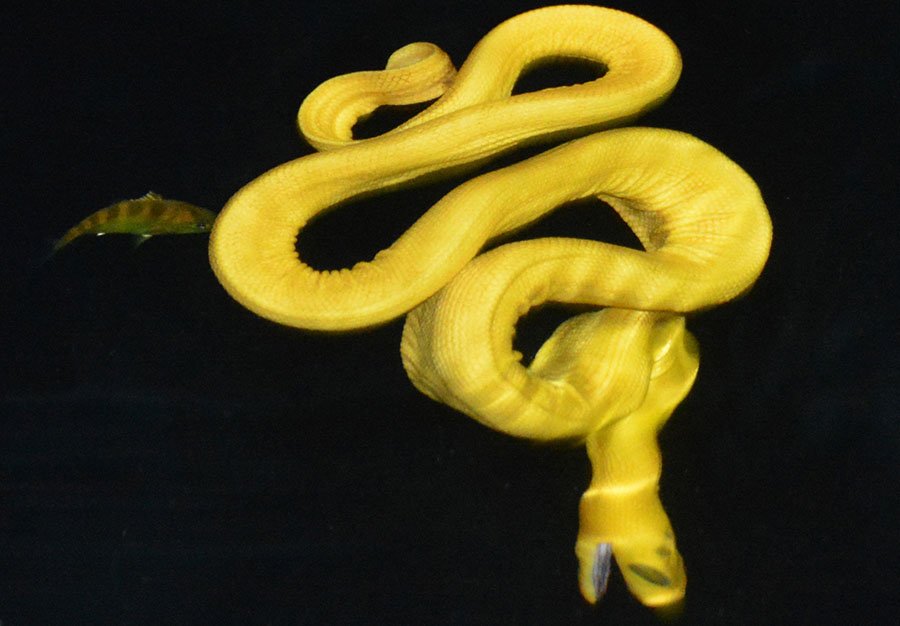This bizarre sea snake brings death from above

Bec Crew
Bec Crew

YOU KNOW YOU’RE doing something right when you’re the most widely distributed snake in the world, with a range covering the entire tropical Indo-Pacific, then out to Costa Rica, southern California, and northern Peru.
And how about being the only sea snake in the world to have reached the Hawaiian Islands, and one of just two sea snakes to have ever made it to New Zealand?
You also know you’re doing something right when you can survive in the cool waters off the coast of Tasmania, when el Niño events or severe storms push you out of more comfortable temperatures up around the east and west coasts of Australia.
And did we mention that it’s the most aquatic snake in the world, having never evolved the ability to survive on land?
Meet the yellow-bellied sea snake (Hydrophis platurus) – an absolute powerhouse of a reptile that you do not want to mess with.
The males can grow up to 720 mm long and the females are 880 mm long, and they have a beautiful, dandelion-yellow belly, contrasting with a pitch black, but almost blue, back.
Their paddle-like tails, which they use to propel themselves through the ocean, marry these two colours together in a rather jaunty, polka-dotted pattern:

(Image Credit: Carpenter0/Wikimedia)
If these creatures look intimidating, it’s because they are – yellow-bellied sea snakes have no natural predators, and are incredibly venomous, with toxin that can damage the skeletal muscle; inflict paralysis; cause acute renal failure; and can be fatal if not treated.
The good news is there has never been a reported death in Australia due to yellow-bellied sea snake bite, despite being pretty common in our coastal waters. In fact, the species is the most common sea snake found on Perth beaches.
Fortunately, these slick predators save their venom for hunting – a defensive bite won’t pack the toxic punch that an aggressive bite will, which is great for us humans, and bad news for the yellow-bellied sea snake’s prey.
Spending their entire lives underwater – they eat, sleep, and breed in the ocean – yellow-bellied sea snakes feed mostly on fish, immobilising them with a venomous bite.
But a newly discovered subspecies of the yellow-bellied sea snake (pictured below) does one better. At night, it will hang upside-down in a coiled position, just below the surface of the water, and strike at any unsuspecting fish that venture below.

(Image Credit: Brooke Bessesen )
This hunting technique has never been seen before in another aquatic species, and it’s unique to this weirdly yellow subspecies, called Hydrophis platurus xanthos, from Costa Rica.
While yellow-bellied sea snakes aren’t interested in getting anywhere near a human, they sometimes beach themselves, and that’s when they’re at their most dangerous to us.
Because even a weak one or one that appears to be dead can strike if you’re trying to move it, so never approach a sea snake that’s washed up on the shore. Call your local wildlife service so they can safely get it back into the water.
Here’s a yellow-bellied sea snake in all its glory, hunting, swimming, and tying itself in knots:

